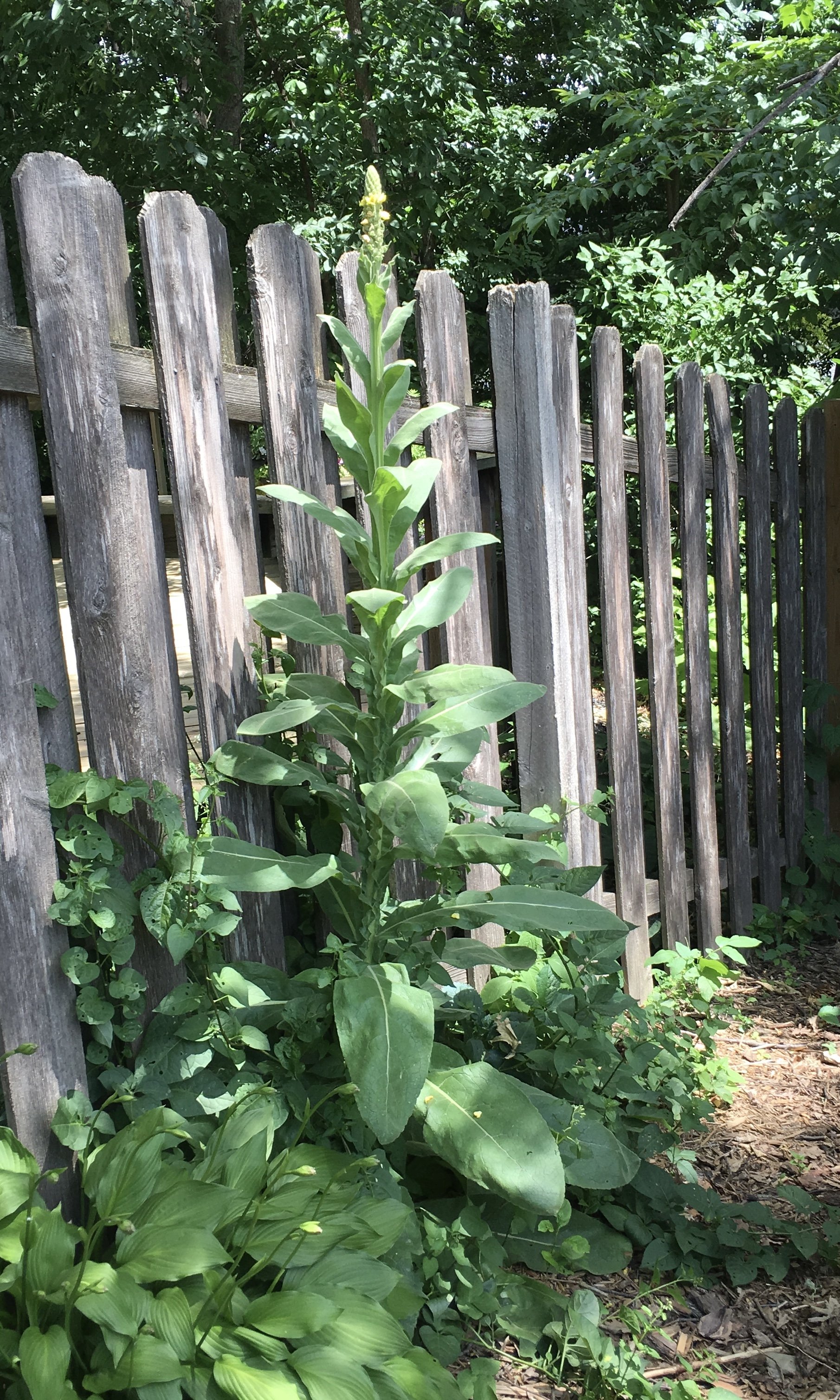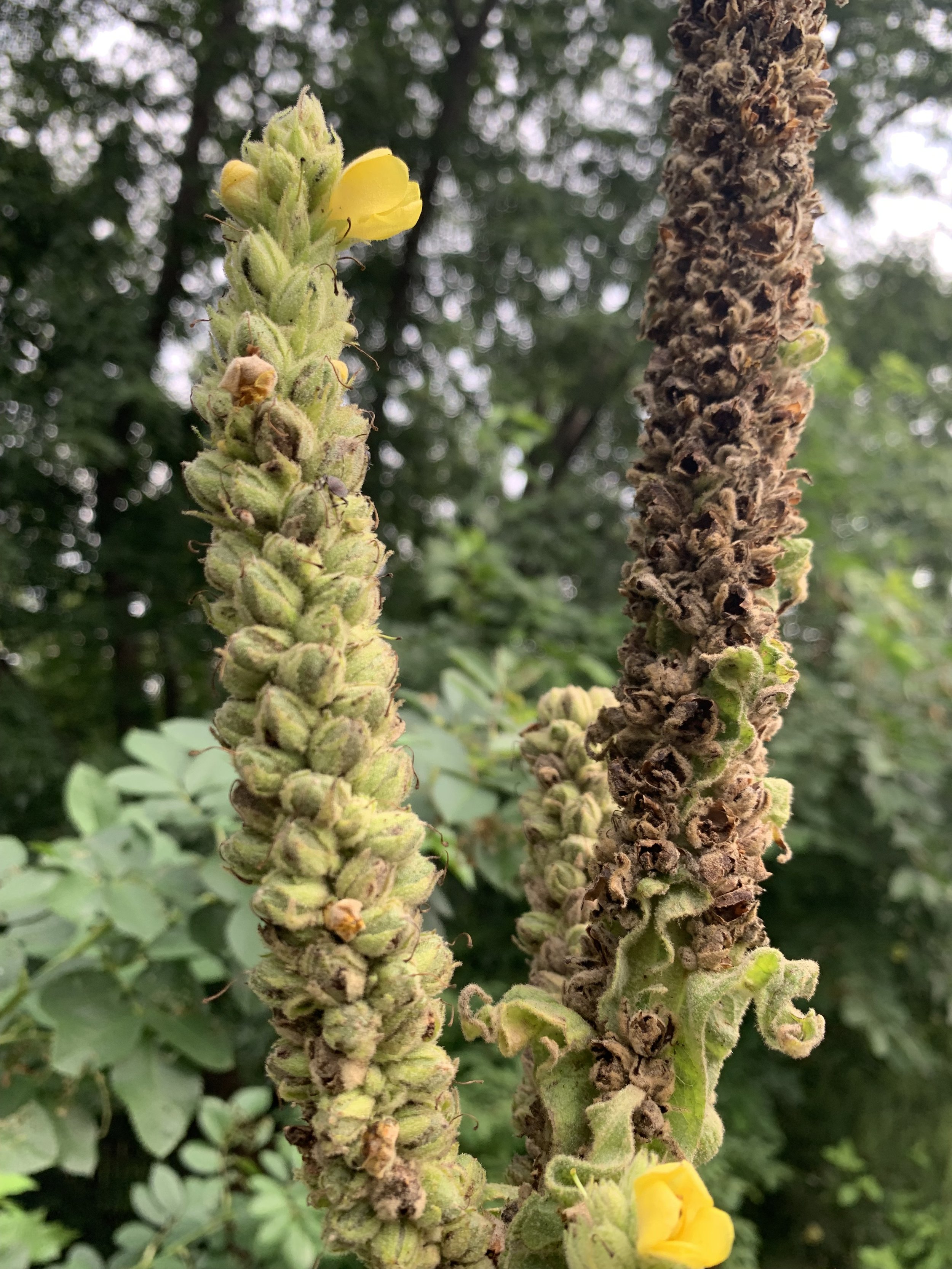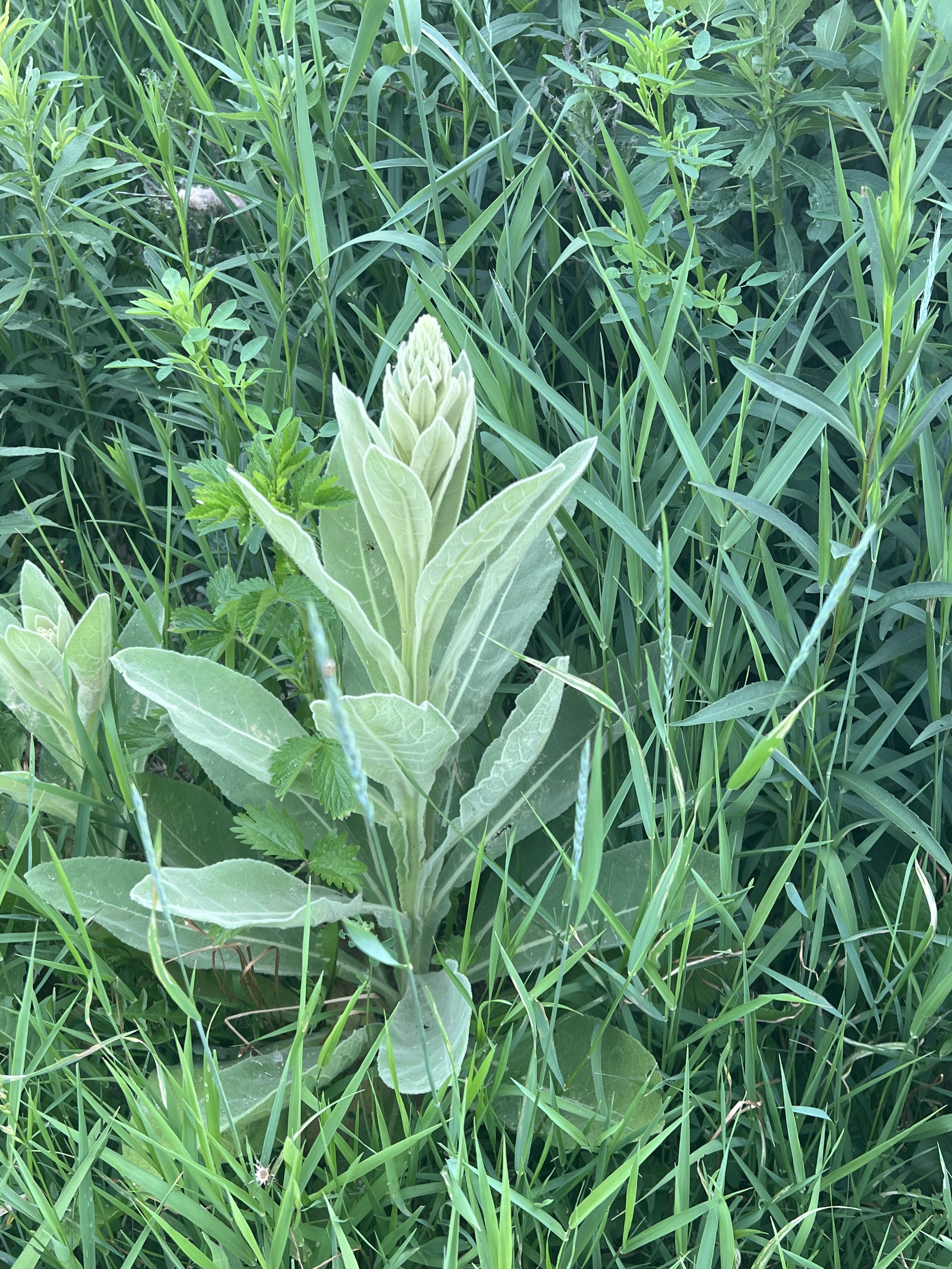Carrying the Torch for Mullein
STANDING TALL AMONG OTHER WILD EDGE HERBS
Mullein is hard to miss once you know what you’re looking for. You might have passed it a few thousand times on the side of a rural highway. Or perhaps on a dry sunny hillside between marshy banks and cool forests. Mullein begins quite small in a soft rosette style green bloom that kicks off the spring season. I used to mistake it for Lamb’s Ear because they both bloom early with very similar leaf types, soft green blue hues, and fuzzy leaves. But before long, Mullein makes itself known more plainly. It sends up one long central stalk, sometimes growing up to seven feet tall in size. On the stalk are small buttery yellow flowers with long soft leaves that sometimes curl back to the stem giving it the overall appearance of a glowing candlestick with green handles.
THE ROMAN TORCH
It makes sense then that the Roman’s would get the idea for a torch. Mullein’s rich herbal history is quite long and has been in use for centuries. The Romans thought to take the long stalks and once dried, dip them in an animal fat called tallow which they would light with a flame. The long stalk acted as a torch, keeping Roman hands quite safe from the heat while the tallow burned slowly over hours. This gave people and armies time to walk about an explore through the night. While you could pluck and save these long wands for a supply chest, you wouldn’t need to. Mullein grows plentiful across the countryside. Sometimes as one lone stalk, sometimes a few scattered about, and occasionally in a full hearty patch planted in arms, as thick as a cornfield.
THE CIVIL WAR SOCK
Mullein has also come to the assistance of more recent traveling armies. During the American Civil War, soldiers were known to tuck the broad leaves from mature plants into their shoes to use as socks. The leaves can grow quite large, measuring 12-14 inches in length, and about 6 inches in width, making them a perfect insert to any shoe. Their soft fuzzy leaves are cozy to step into, no small thorns to rub or irritate on miles-long marching. But perhaps what makes these such a genius wild sock is that Mullein contains anti-fungal and anti-bacterial properties, protecting the health of the foot beyond a soft landing.
A GENTLE WILD HANDKERCHIEF
There are other uses too of course. With such a soft broad leaf, it makes sense as a simple handkerchief for any personal use. Cooling, drying, to wipe sweat from the face, or to use as a bathroom aid as toilet paper or other soft cloth personal needs.
IDEAL GROWING CONDITIONS FOR MULLEIN
Mullein prefers dry, well drained soils in full sun. It is a biennial plant, the first year showing its rosettes low to the ground, growing about the size of a dinner plate. In the second year, the plant shoots up the long stalks, with blooming yellow flowers and sends its seeds out across the field. Mullein is opportunistic. You will see it expand across a hillside, slowly filling in the gaps where there might be a bit of open earth and open sunlight. You won’t find it in the concave places where water collects. Instead you’ll find it just near, higher on the edge, where its sunny and dry.
THE REPARIAN EDGE
Sometimes I use Mullein as an indicator of soil conditions in my yard – a candlestick or torch in its own kind of way. I know if Mullein is growing there, it’s a signal that others can follow in the same place: sunny and dry. After Mullein is there, it leaves it a bit better than before. Mullein is a repairing herb for soils. It is quite adventurous, seeking new places to land and explore. But it is strategic as well. Mullein plants itself where soil conditions are poor, and it remedies them. It is a nitrogen fixer, adding important nutrients to soil in need. Despite its tall stalk and tap root, Mullein is very easy to pull up, compared to say, Dandelion. Though we just let oura rest where they land. We know they have important work to do, and they are providing beautiful nectar and food for pollinators as well.
A BREATH OF RELIEF
Mullein provides light in dark places, softness for damp feet, and dryness for a sweaty brow. It also prefers a dryer gravely type soil, preferring the higher bank vs the damp ditch. So it is no big surprise that it offers some drying benefits as an expectorant for any mucus in the lungs as well. Mullein has been used in folk medicine to calm inflammation and treat asthma, bronchitis and pneumonia.
USING MULLEIN IN YOUR HERBAL APOTHECARY
Obviously Mullein’s usefulness is vast, and most of its uses require no processing at all. But there are a few wonderful ways to use the drying properties of Mullein and to store in your cupboard for later.
To dry Mullein leaves, begin by finding a tall, healthy mullein plant and if you can, talk to it. Ask for permission. This may sound silly but when you’re working with herbs, especially herbs you’re looking for healing energy… then being gentle, asking for permission is kind. Make a trade or other offering to the plant. This can be a simple whisper of gratitude, or something that helps support the plant’s overall health. If you’re foraging, look around and make sure you’re not over collecting or disturbing the area. The best time to collect is in the morning when the plant is fresh and not too taxed from the hot day. You can harvest the leaves and be sure to dry them properly. Once dried, crumble and store in a dark jar for later use. The leaves can be smoked to provide relief for coughing or extra mucus.
Mullein flowers can also help with an ear infection. Collect the clean, dry yellow flowers from the stalk, usually blooming in June and July. Make sure they are dried, with no dew, and check for any bugs. Once clean, place them in a carrier oil for 7-10 days. Mullein’s antibacterial properties help to infuse the oil that can clear up out of control bacteria. This oil can be used in drops in the ear to dry up a simple ear infection.
Mullein can also be used as a tea. An infusion of the dried mullein leaves or flowers can make a nice tonic when a flu or cough comes around.
As usual, please do your homework, make sure to positively ID your plant, and consult a local herbalist for correct dosages and safety concerns.
A FAVORITE HERB FOR HEALING THE EDGES
Mullein lights the way. When you find yourself somewhere in the dark, damp doldrums, Mullein shoots its hand high in the air, waving back and forth like an eager student with the correct answer. Its bright candlestick shape giving you all the clues to its usefulness. “I can help! I can light the way!” she says. You can simply walk on the path and Mullein will find you and provide immediate relief to the traveler’s common woes. She plants herself just above the sour ditch, right where you might need her help. So let her plant herself on the path, lighting the way forward. Trust her aid. If you see her healing the edges of hillsides, remember she heals the edges of us too.






